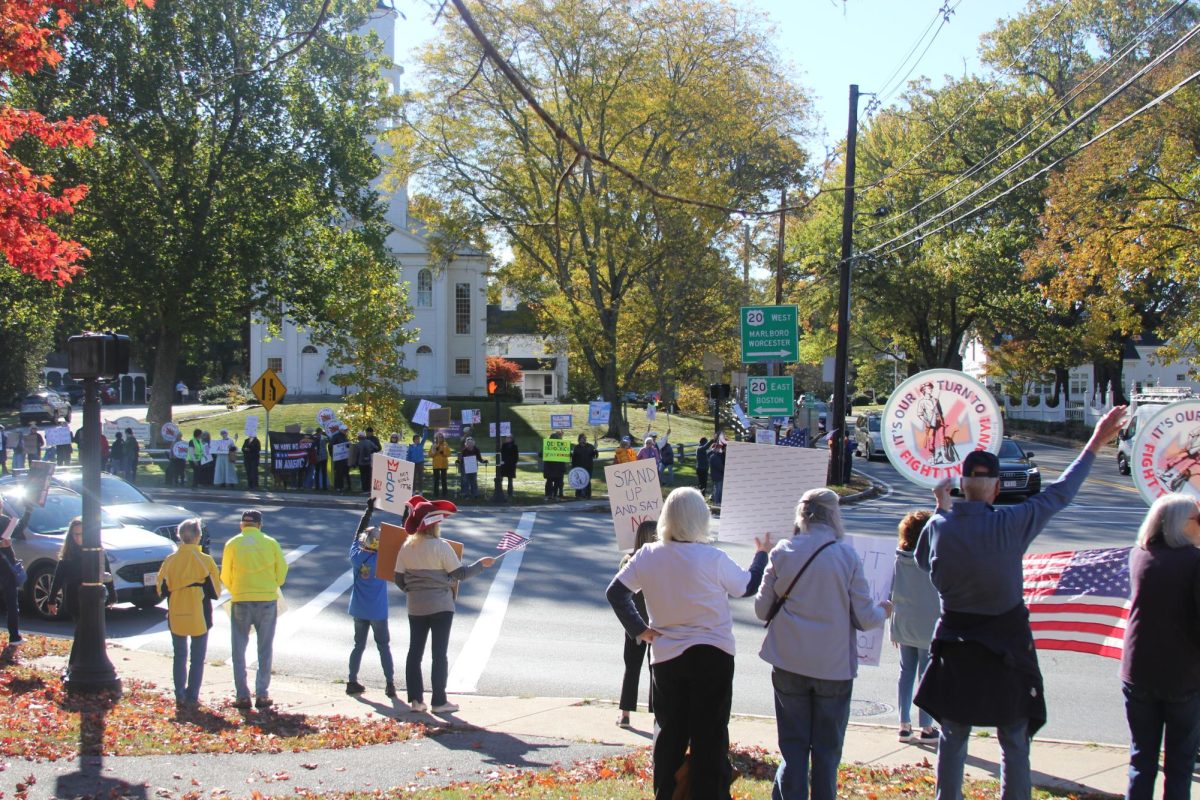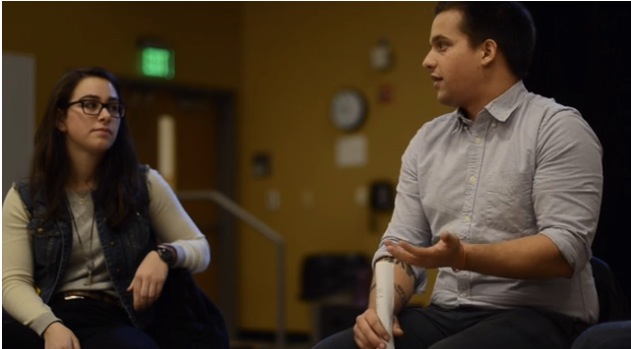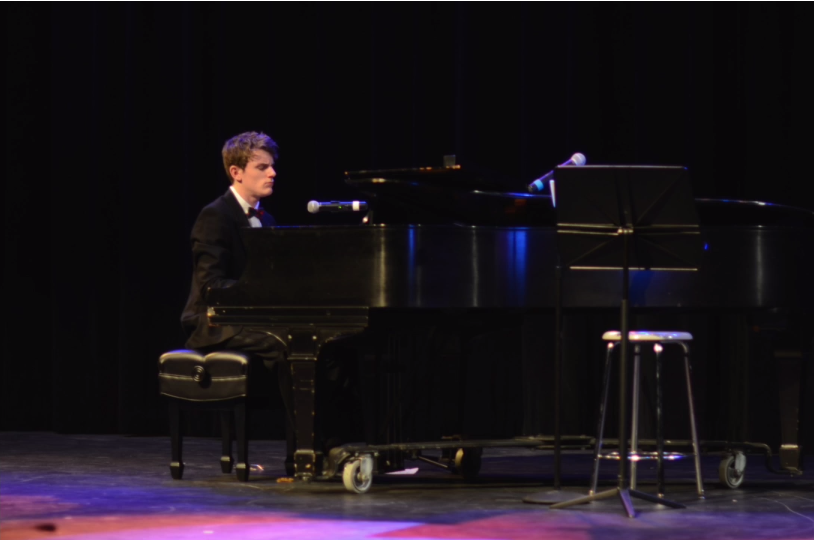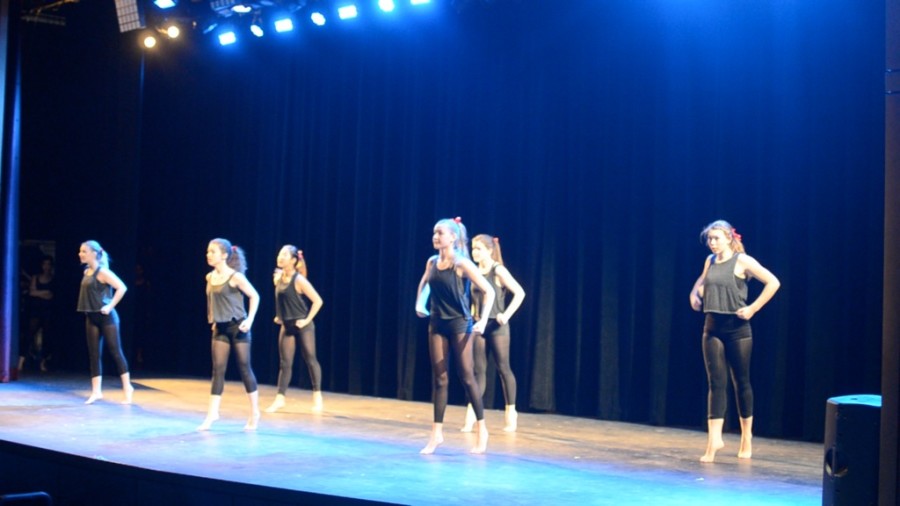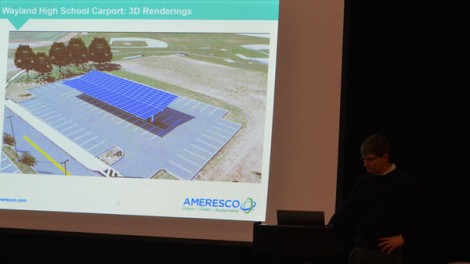
Wayland volunteers John Harper and Ellen Tohn of the Wayland Energy Initiatives Advisory Committee discussed today the benefits and importance of embracing solar energy in our community. Through a PowerPoint presentation, they explained their solar power proposal the town will vote on in April. They claim the proposal will reduce Wayland’s energy costs.
The Wayland Energy Initiatives Advisory Committee partnered with the Framingham company Ameresco, that will, if the proposal is passed, use WHS’s roofs and parking lots to install solar panels with no cost to the town. Wayland would then buy the electricity made through the solar panels from Ameresco and resell it to the energy grid.
The proposal involves a 20 year contract with Ameresco, who would be responsible for the running and upkeep of the solar power systems. However, by selling the energy to the grid, Wayland would earn over $175,000 from the energy savings and $30,000 from Ameresco in taxes per year. These solar panels would generate 1.6 million kilowatt hours per year.
The solar panels would help the energy committee meet their goal of reducing Wayland’s energy use by 20%. They have currently reduced by 12%, which is partially from installation of energy saving light bulbs across town, and the solar panels would put them over the 20% goal.
The solar panels, if voted through, would begin to be constructed the day students get out of school for summer break and would be finished before the fall semester. The main section of the solar panels would be built in the WHS (senior, junior and pool) parking lots. No parking spots would be lost because the base of the panels would be installed in the grass dividers and raised 13.5 feet. Snowplows, cars, firetrucks and buses would be able to maneuver around them.
Other construction sites include the middle school parking lot, Town Hall parking lot and the Department of Public Works building roof.
Harper explained that the panels are designed to withstand snow storms. The square panels are separated by half-inch gaps and tilt downward and meet in the middle with a one inch gap, unlike a roof, so the snow does not fall on passersby and create more work for the snowplows. Snow would not be cleaned off because it would increase costs, and there is not enough manpower. It would stay and then trickle through the gaps as it melts.
According to Tohn, the high school would act as a power plant and would not use any of the generated power because it is a better financial deal for Wayland if power is sold back to the grid. Massachusetts supports those who use alternate energy sources with financial benefits as well. This proposal is also for Wayland’s 13,000 residents, Tohn said, who would each save approximately $20 a year through use of the new solar energy from Wayland’s energy grid.
The vote will take place the first week of April. Anyone over 18 years of age can participate.

